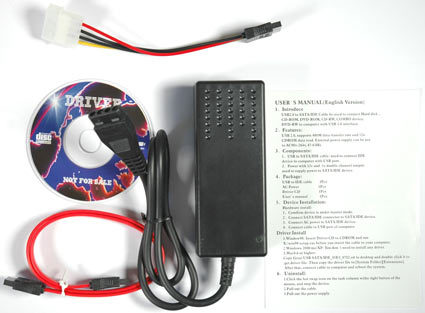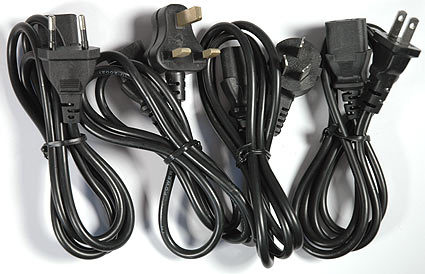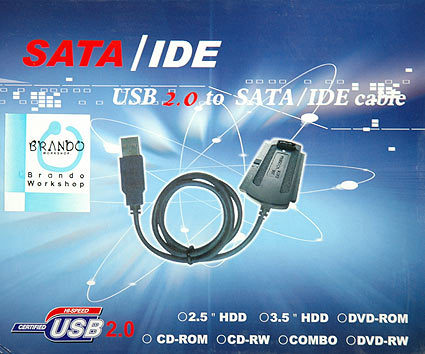Brando Hooks Up (S)ATA Drives To USB 2.0
The Device Supports SATA And UltraATA
The logic for converting the signaling and protocol from Serial ATA or UltraATA to USB 2.0 is located within the connector part of the cable. This side shows the high-density connector for 2.5" hard drives.
Unfortunately, Brando's product is not available everywhere in the US. Fortunately, there are a couple of similar products that do not differ very much, so this review is more or less applicable to all of them.
Inside the package we found the adapter cable, which comes with a USB connector on one end and a compact adapter module on the other. The adapter module offers one Serial ATA port, one 40-pin UltraATA connector and a 40-pin HD (high density) UltraATA connector, which is necessary for 2.5" hard drives. (Note that the device can only handle one drive at a time.)
We had issues with the high-density UltraATA connector: it simply did not work, whether we tried 2.5" hard drives from Western Digital and Fujitsu, or a 1.8" hard drive from Hitachi. Both SATA and UltraATA worked properly, though. Eventually, we used a 3.5" to-2.5" UltraATA adapter to connect a 2.5" hard drive to the regular standard 40-pin ATA connector. Finally, we also tried a two-year old Serial ATA optical drive by MSI, which also worked properly.
The combination of Brando's adapter and a hard drive works like an external USB 2.0 mass storage device and is integrated with "My Computer" as such, so there is no need to install any drivers. As expected, the USB 2.0 interface does not deliver the data transfer rates that a modern hard drive is capable of. We used the German c't magazine's h2benchw benchmark to test the adapter's performance. Read performance came in at about 30 MB/s; we benchmarked almost 27 MB/s for writes, which is exactly the performance level that we expect from a high-speed USB 2.0 device.
You can find the 40-pin UltraATA connector on the other side of the connector module.
Brando ships the adapter system together with a small power supply unit, a Molex-to-SATA power adapter, a Serial ATA cable and a software CD. There is a small manual, but we found that the installation process is very much self-explanatory.
Get Tom's Hardware's best news and in-depth reviews, straight to your inbox.
Brando provides lots of different power cables so it can ship into as many markets as possible.
Current page: The Device Supports SATA And UltraATA
Prev Page Attach ATA Or SATA Drives Via USB 2.0 Next Page Test Setup
Patrick Schmid was the editor-in-chief for Tom's Hardware from 2005 to 2006. He wrote numerous articles on a wide range of hardware topics, including storage, CPUs, and system builds.




